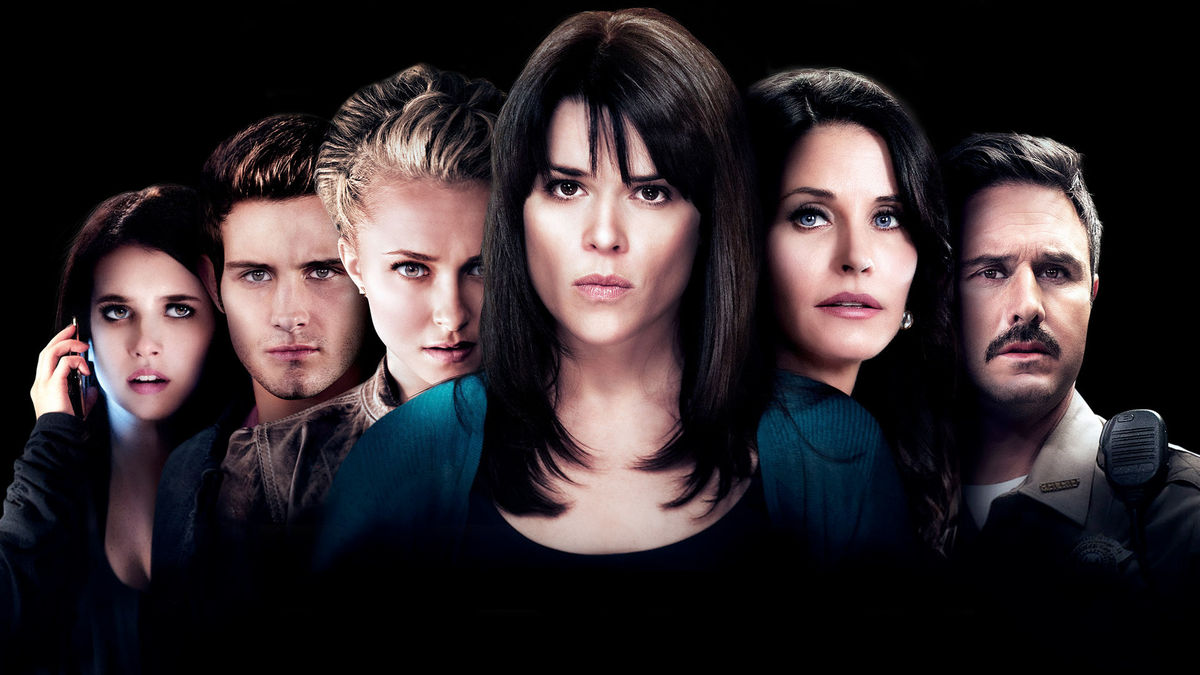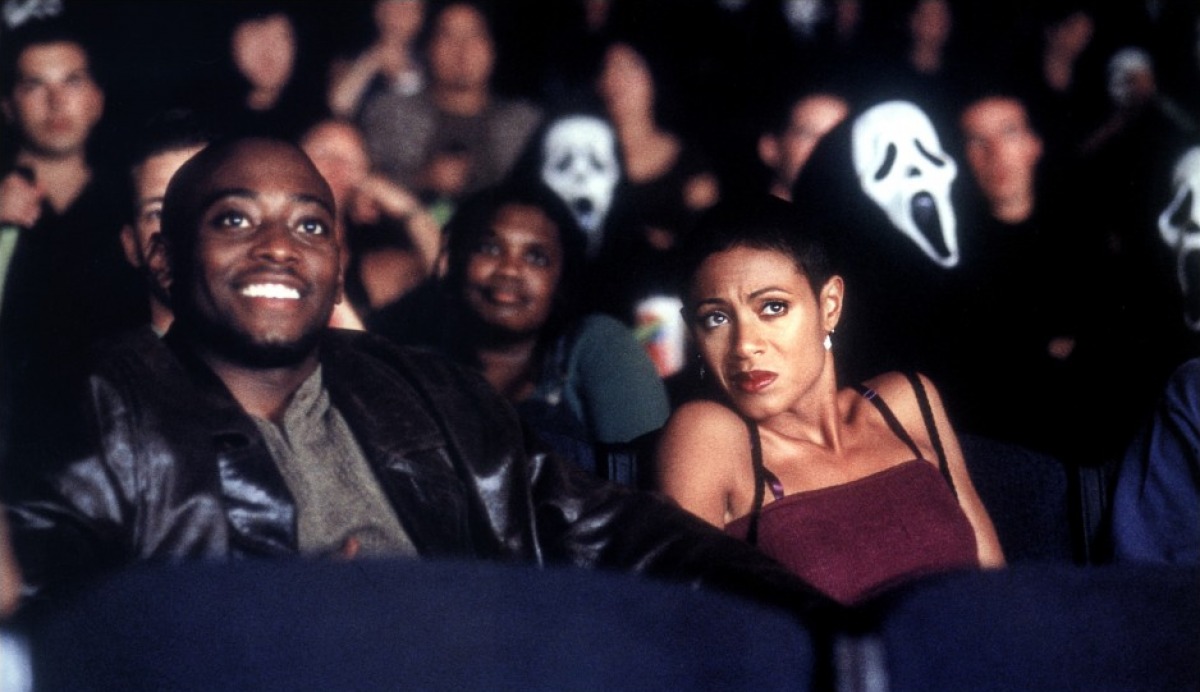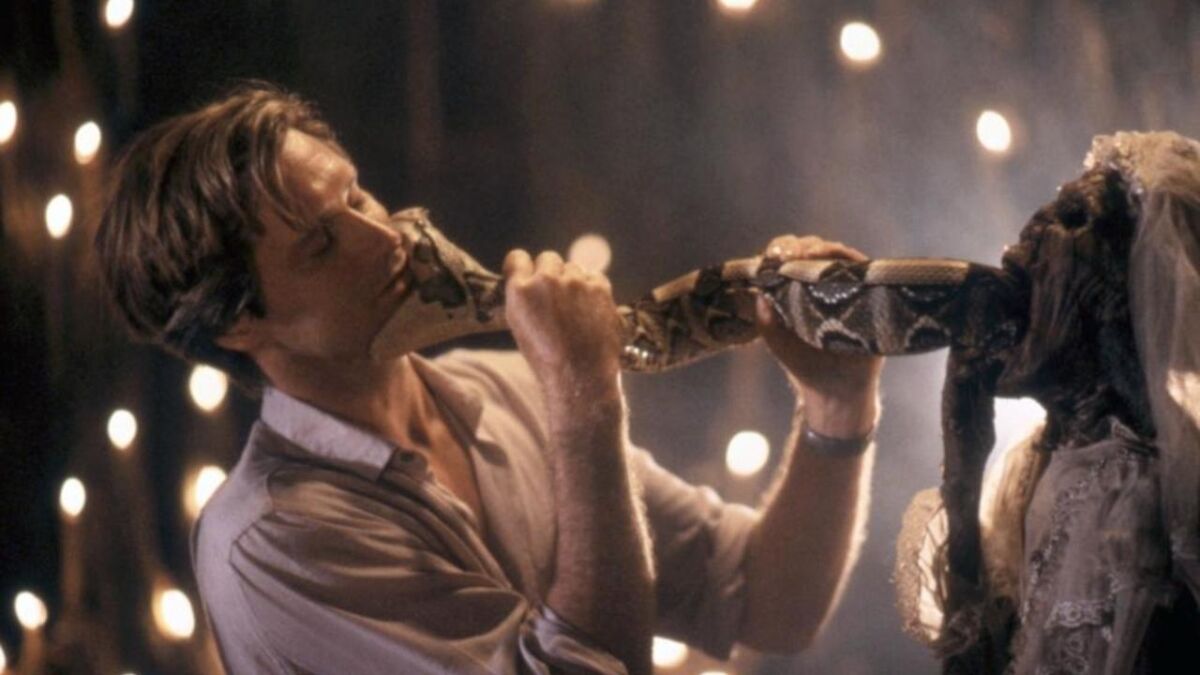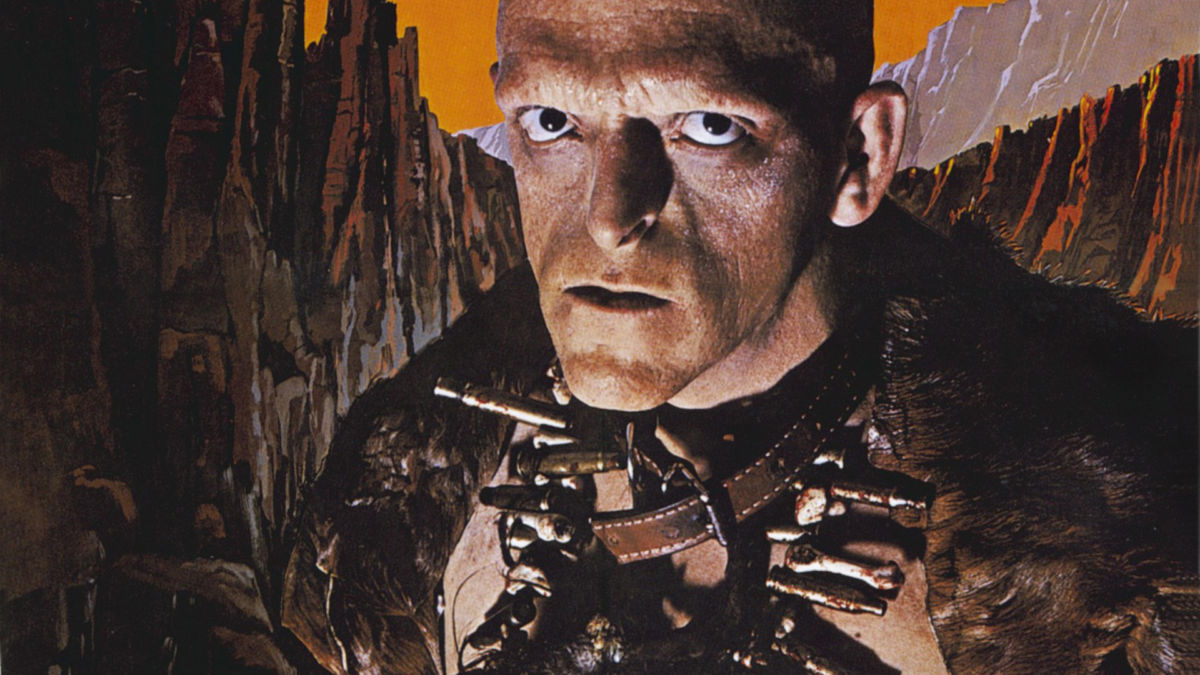Throughout his life, people often remarked how normal Wes Craven looked. He just didn’t look like the kind of guy who directed films like Last House on the Left, A Nightmare on Elm Street, or Scream. Indeed, he looked, dressed, and spoke every bit like the college professor he really was, before deciding instead to become a filmmaker.
Given the humor often found in his films, almost all of which are horror, it’s reasonable to imagine he found people’s expectations of him amusing. Perhaps frustrating, as it was apparent that Craven wanted to do stuff outside of the genre.
However, at the end of the day, Wes Craven simply wanted to make movies. Up to a point, and at different stages of his career, he wasn’t fussy about where to go for work. Horror wound up being his most lucrative direction, combined with a genuine interest in making movies in that genre. His best films benefit from ambition, a dry, dark sense of humor, and an almost supernatural ability to work well with virtually any actor on the planet.
His breakthrough hits The Hills Have Eyes and Last House on the Left led to more work. The results are even, with Craven only really hitting his stride by the mid-80s. The 90s proved to be equally interesting, with Craven directing no less than two classic meta horror movies, New Nightmare, and, of course, Scream. Craven’s films continued to explore, among other things, the psychology of fear, specifically, our relationship to the horror medium itself.
Wes Craven would continue to work through the 2000s, outpacing contemporaries like Tobe Hooper and John Carpenter, bookeding his career with a fourth Scream. Even to the day he died in 2015, it just seemed like eventually, at some point, he would direct another film.
Even now, several years after his passing, it still seems unreal that the extremely prolific director is no longer with us.
With approximately 26 films under his belt, let’s take a stab (what the hell, pun intended) at ranking the best Wes Craven movies.
The Best Wes Craven Movies
15. Scream 4 (2011)

Wes Craven’s final film has proven to be a worthy conclusion to the career of one of horror’s most influential, frightening, and entertaining directors. It seems fitting that the movie itself would be another chapter in the Scream saga. After Freddy Krueger, there is probably no greater association with Craven’s name than the ongoing misfortunes of Sidney Prescott.
And seemingly anyone who decides to be her friend.
Obviously, to enjoy Scream 4, released several years after the messy Scream 3, you’re going to want to have seen the others. Assuming that is the case, you’re going to be mostly pleased with how the film updates its meta-horror concepts, revisits old characters, and introduces new ones.
No, it’s not perfect, and the ending could be argued as lackluster. However, Scream fans will mostly be glad to see everyone back together, especially Wes Craven, whose direction across these four films was a vital part of their respective and larger successes.
14. Red Eye (2005)

The same year Wes Craven re-teamed with Scream writer Kevin Williamson for the decidedly unsuccessful Cursed, he also directed a fairly unassuming thriller called Red Eye. The film was surprisingly successful, both commercially and financially, giving Wes Craven the distinction of being one of the few horror directors from the 70s to still be working on the commercial level.
Red Eye is the story of a young woman (Rachel McAdams) who finds herself the centerpiece to an assassin’s (Cillian Murphy, at his creepy best) political murder of the head of Homeland Security. The film has good performances, with equal attention paid to building genuine tension in a confined space. All of it works well, because Craven knows how to hit these beats, and his best work showed a knack for making absurd plot twists palatable.
That is very much the case here. Red Eye is just pure entertainment. Nothing groundbreaking, but it keeps things relatively simple, and meets our expectations nicely.
13. Deadly Friend (1986)

Few films on this list are quite as off-the-wall as 1986’s Deadly Friend establishes itself to be almost immediately.
Deadly Friend descends quickly into the utterly deranged story of a teenage genius Paul (Matthew Laborteaux) who uses the brain of his vaguely homicidal robot pal BB (Roger Rabbit voice actor Charles Fleischer) to bring his girlfriend Samantha (Kristy Swanson) back from the dead.
The film is a blur of oddball vignettes featuring Paul and BB, followed by bizarre nightmare sequences, and an increasingly surreal, abusive relationship between Samantha and her father (a crazed, memorable Richard Marcus).
And then Samantha seemingly dies, and things start to get really strange in the world of Deadly Friend.
The ambition on Wes Craven’s part to tell a deeper and more expansive horror story is apparent here, as sadly Deadly Friend is a clear consequence of studio interference. What you have then is a film that’s wild enough to be interesting, but also suggests it could have been much more.
12. Music of the Heart (1999)

Music of the Heart is the only major non-genre film work of Wes Craven’s career, the director’s strength for characters and a steady evolution of the relationships between those characters.
The film is a fairly standard inspirational story of a music teacher (Meryl Streep) reaching out to the “troubled” students at an inner-city school. In this case, in Harlem, New York. It doesn’t aspire to be anything more than a fairly pleasant comedy-drama, with fairly low dramatic stakes.
That’s fine in of itself, but it’s particularly interesting to see such a film helmed by Craven. With the success of Scream 2, Wes Craven seemingly and finally had enough clout to direct something that wasn’t a horror movie. He proves here in no uncertain terms that he can direct something completely outside of the horror genre.
Of course, we’re fortunate that he stayed in horror, but Music of the Heart is an interesting side quest. It wouldn’t denigrate his horror classics if he had perhaps been given the opportunity to do a few other types of films.
11. Swamp Thing (1982)

When done correctly, the DC Comics character Swamp Thing can be a wonderful blend of horror, fantasy, the creature feature, and the concept of the moral, but nonetheless reluctant superhero.
Swamp Thing was fairly different from anything else Wes Craven had done up to that point. The brutality of his earlier successes is not to be found here. What Swamp Thing offers instead is something more optimistic, kinder, and more character driven. At the same time, Swamp Thing is very much a straightforward, easily accessible superhero story.
A scientist (Ray Wise) is accidentally transformed by the machinations of evil forces into a monstrous creature. He must then use his recent change and newfound gifts to stop a mad scientist (Louis Jordan) from keeping his very busy mad scientist schedule.
Beyond Craven using his horror movie background in a very different way within the perimeters of this film, Swamp Thing is also low-budget monster movie fun, benefitting from an intriguing premise told well, in addition to great performances by Wise, Jordan, Adrienne Barbeau, and the great Dick Durock as the titular Swamp Thing.
10. Shocker (1989)

Some Wes Craven horror movies are true masterworks of the genre.
Others are, at best, messy, but god, are they a lot of fun.
Shocker, which concerns a mass murderer (the always wonderful Mitch Pileggi), who is given the opportunity to be reborn as pure electricity, is very firmly in the second category.
It can be difficult to defend this weird slasher film. Craven aspired to create a character that could launch a franchise he himself would be able to control, which was not the nature of his relationship to his more famous A Nightmare on Elm Street at that specific moment in time. Shocker was the result, and it was a deep failure on every level when it was released in 1989.
Yet it really doesn’t deserve to be seen as such. Despite some very clear connections to A Nightmare on Elm Street, Shocker has a lot of fun to offer on its own. Beyond Pileggi’s incredibly entertaining manic, the movie has pleasing low-budget effects, exceptional pacing, and a much darker and stranger sense of humor than much of Craven’s filmography.
9. The Last House on the Left (1972)

What The Last House on the Left lacks in technical finesse, it makes up for with sheer blunt shock value. Heavily inspired by Ingmar Bergman’s equally disturbing 1960 film The Virgin Spring, Last House on the Left has a reputation for being one of the most disturbing movies ever made. For its ugly, shockingly graphic attention to violence, and to the gleeful cruelty of the film’s antagonists, it’s hard to argue with those people.
The Last House on the Left, at its core, is a revenge story. Craven doesn’t glamourize the savagery which unfolds when a group of psychopaths swoop in to destroy two teenage girls on every possible level. However, he goes harder on the sights and sounds of this destruction than he ever would in subsequent films. The movie eventually becomes the story of the parents discovering what has happened, and taking out a degree of vengeance that is at least physically on par with the horrors that befell their children.
There might be a moral here, but Craven buried it in his first feature in miles of torture, rape, and murder. Still, as a testament to just how far Wes Craven can go, The Last House on the Left is essential watching at least once.
8. Deadly Blessing (1981)

The ambition of Deadly Blessing is impressive, and mostly works out in a film that can be described as a “transitional piece” from Wes Craven.
Deadly Blessing is among the writer and director’s most underrated, involving the story of a young widow (Maren Jensen), who deals with her late husband’s fanatical religious community in the wake of his passing. The story has stranger impulses that sometimes slow down the more interesting threads concerning religion and loss, but those are largely enjoyable. The religious nuts obviously have plans for the young widow. All she has on her side, as it would seem, are a couple of good-not-great friends, which includes an early Sharon Stone performance.
Deadly Blessing is an interesting effort by Craven to meet his willingness to use intense, violent set pieces within a more fantastical storyline. The movie never stops being compelling, and often conveys a truly unsettling presence in this religious group.
Some of the visuals associated with Deadly Blessing, including a distinctive final jolt before the credits, are as good as anything Craven worked with at this stage of his career. Craven diving a little more intensely into religion, which was a big part of his own upbringing, is also interesting.
7. Scream 2 (1997)

When you direct a movie as commercially successful and culturally transformative as 1996’s Scream, the odds of a sequel are virtually unshakable. Impressively, or perhaps not, given the talent involved, and the reasonable potential for the story of Sidney Prescott to continue, Scream 2 proved to be just as successful as its predecessor.
Some even make the argument that Scream 2 is one of those examples of a sequel being superior to the first entry.
Regardless of how you feel about that argument, it isn’t hard to see why Scream’s massive fanbase loves the sequel so much. The story of Sidney (Neve Campbell) is advanced with old faces and new ones in a way that avoids empty character development, or a plot that sticks too closely to the original.
Scream 2 continues with its meta-approach to the slasher genre. This is expanded upon to include, deconstruct, and gently tease the inevitable follow-up to the hit. Scream 2 never loses sight of a sense of humor, especially about itself, but Wes Craven’s direction also keeps the pace and energy firmly planted in horror movie territory.
6. The Serpent and The Rainbow (1988)

An anthropologist (Bill Pullman) is sent to Haiti by a pharmaceutical company, to investigate the potential use of a drug frequently found in voodoo ceremonies with the hope that this drug really will have the ability to cheat death once and for all.
People messing with things they shouldn’t isn’t a dominant theme in Craven’s work, but it’s fascinating nonetheless to see him working with that idea here. The Serpent and the Rainbow is what happens when the arrogance of an outsider is met with forces and powers they could not begin to understand.
While the movie occasionally teeters above the oblivion of becoming too ridiculous for its own good, The Serpent and the Rainbow is one of the most creative horror films of the late 80s. Loosely based on a nonfiction book by Wade Davis, Craven explores this concept as seriously as humanly possible. The film still manages to go for broke on some very striking, even scary visuals and atmosphere,w hile also featuring strong performances from Cathy Tyson, Zakes Mokae, and Paul Winfield.
The Serpent and the Rainbow has fun as a horror movie, but it’s also one of Craven’s best examples of using the genre to delve into other subjects.
5. The Hills Have Eyes (1977)

The success of The Last House on the Left in 1972 was a blessing and a curse for Wes Craven. The brutality of the film made it clear to audiences that Craven was an intriguing new voice in horror, which certainly in part helped it survive as more than a grim curiosity. At the same time, Craven found it virtually impossible to get a job directing something outside of the genre.
After a long stretch following Last House, one of the longest in Craven’s life in which he was not directing or writing feature films, the reluctant horror maestro took on the story of a cannibalistic family in the wastelands of the southwestern California desert.
Their latest victims come in the form of a fairly unlikable suburban clan, on a road trip across the United States. After a masterful build to the really nasty stuff in this movie, Craven settles in for a fantastic showdown between two groups of people who aren’t as different as they might think.
The Hills Have Eyes offers plenty of the violence people were demanding from Craven at this point. The film also gives us stronger characters, a stronger back-and-forth dynamic between the protagonists and antagonists, and shock value that’s more than just a blunt instrument.
The Hills Have Eyes should rightfully be seen as the first serious indication of Craven’s talents. The 1984 sequel should only be explored by those with an affinity for really, really bad movies.
4. The People Under the Stairs (1991)

Of all the films covered on this list of the best Wes Craven movies, The People Under the Stairs might be the most unique. Essentially structured and relayed as a very dark fairytale, with a singular approach to Craven’s consistent interest in stories about children being forced to do more than simply endure the whims of adults, this movie is one of Craven’s best for a number of reasons.
A young black boy named Fool (a pitch-perfect child actor performance by the appealing Brandon Adams) finds himself part of a robbery in an affluent neighborhood. The robbery goes wrong, and the poor kid winds up being trapped in a cavernous house with a deranged, cannibalistic couple (Everett McGill and Wendy Robie, reuniting for something even crazier than their time on Twin Peaks).
With only their daughter, and the small army of young boys the couple keeps in the basement, Fool must not only survive, but potentially bring this monstrous couple to justice.
The People Under the Stairs tells a pretty ambitious story. Combined with sharp social commentary, the film is also something of a campy adventure film. Imagine Home Alone, except the kid breaks into the house instead, along with the element of a rich white couple enacting extreme, callous control over black neighborhoods.
This movie isn’t particularly scary, but it’s one of the most original horror movies of the first half of this decade that combines several of Craven’s interests into a very strong overall film.
3. Scream (1996)

While horror might have been experiencing a downward period by the mid-90s, the genre certainly wasn’t in any danger of disappearing. Even so, you can’t argue with the fact that Wes Craven and screenwriter Kevin Williamson propelled the genre back into the limelight with the 1996 megahit Scream.
There isn’t too much to say about the film at this point. A serial killer terrorizes a small town using horror movies, particularly slasher films, as the basis for their attacks. Craven’s direction keeps the film moving along at a blistering, engaging pace. The screenplay by Williamson uses tropes in a way that clearly still enjoys and even respects them. Rather than winking into the camera, Scream opts to use horror movie expectations in humorous, but still rather threatening ways.
Scream is everything a good slasher movie should have. The characters, particularly those played by Neve Campbell, Courtney Cox, and David Arquette, are among the most beloved in recent memory. They get the support of a script that leaves room for character, but also never stops with the genre essentials.
It all comes together beautifully, with strengths that showcase in stellar form why Scream continues to be one of the most popular horror films of all time.
2. Wes Craven’s New Nightmare (1994)

When Wes Craven finally returned to A Nightmare on Elm Street for its 10th anniversary, he immediately set about restoring Freddy Krueger to a position he felt was more in step with the themes and concepts he introduced a decade prior.
At the same time, Wes Craven’s New Nightmare, which features the cast and other people associated with the original Nightmare on Elm Street being terrorized by a demon who has been kept in a trap created by the Elm Street series itself, took on a number of new ideas. Indeed, this movie explores a meta relationship to horror and the creation of horror itself on a level Craven would later arguably perfect later on with Scream.
“Arguably” being the key word here. While it could be said that Scream is a more satisfying overall film, New Nightmare explores its themes of how we use horror stories to address the horrors of life itself. New Nightmare also benefits from being a far more personal examination of this idea and others, as they relate to the work Craven had done up to this point.
With career-defining performances by Heather Langenkamp, Miko Hughes as her young son, Robert Englund as both himself and the nastiest Freddy ever put to film, and a scene featuring Wes himself that brings this extraordinary idea to a head, New Nightmare is a masterpiece in every sense.
1. A Nightmare on Elm Street (1984)

For better, and perhaps somewhat for worse, A Nightmare on Elm Street finally and firmly put Wes Craven on the map as a director of note. The film’s massive, culture-defining success all but ensured Craven would work in the horror genre for the most part for the rest of his life.
Still, if you’re going to define your career, the story of several teenagers trying to survive a monstrous entity who murders them in their dreams isn’t a bad way to go about that. Craven wouldn’t be completely pigeonholed by this film, and it stands in the present as one of the best of the 80s that also launched one of the most financially successful horror franchises in movie history.
Made for a shoestring budget, and made only after virtually every studio in town said “no thanks,” A Nightmare on Elm Street was the product of Craven’s obsessions, New Line Cinema’s desire to break into the mainstream, and a general exhaustion audiences were beginning to feel with the slasher film. It makes the most of its fascinating premise, but also draws strength from a cast which includes Heather Langenkamp, John Saxon, Amanda Wyss, and of course, Robert Englund as the iconic dream demon himself.
The low budget grittiness of Elm Street most noticeably comes to singular life when the film plunges us into the world of dreams. Craven creates an atmosphere in which even as the film’s low budget is apparent, the very real power of someone as dangerous as Freddy permeates every moment and scene. Later entries would exploit this concept, but only the first movie really establishes Freddy as something truly terrifying. An entity no one can escape from.
After all, you can’t stay awake forever.
More than that, A Nightmare on Elm Street shows us Craven’s enduring respect for children. They were often the most tormented of the characters in his films, yet they were also often depicted as being the most heroic. In Nancy Thompson, played by Langenkamp, Craven created one of his strongest protagonists.
Like his contemporaries, Craven liked to tell stories in which one or several parts of society were either breaking down or showing themselves as they truly were. However, unlike such legends as John Carpenter or George A. Romero, Wes Craven often found hope in the people who were left to pick up the pieces of their arrogant, even malevolent predecessors.
Becoming an icon of the genre, which in turn led to becoming one of the most versatile and compelling filmmakers of all time in the broadest sense of cinema itself, probably wasn’t Wes Craven’s goal. Even so, it is impossible to imagine horror without him, or his ever-vital body of work.
READ NEXT: Exploring the Life and Career of Wes Craven
Some of the coverage you find on Cultured Vultures contains affiliate links, which provide us with small commissions based on purchases made from visiting our site.



